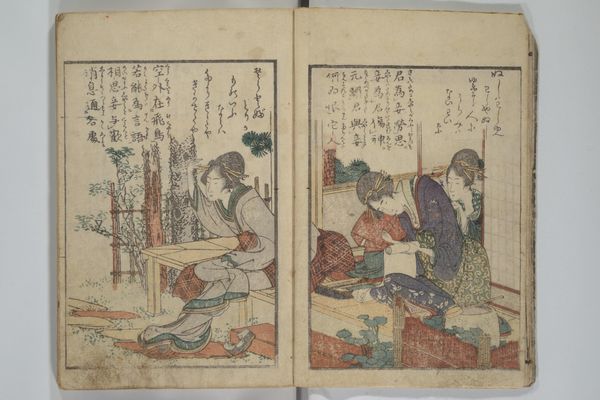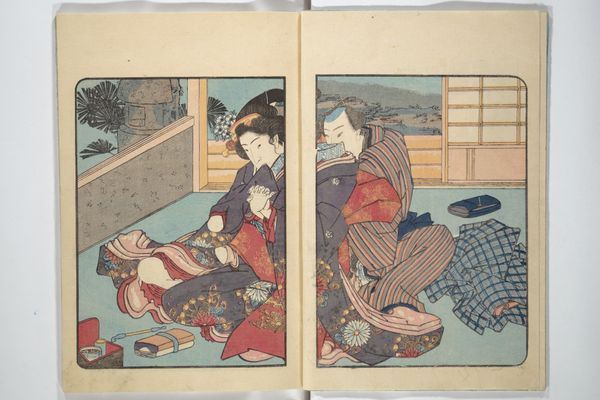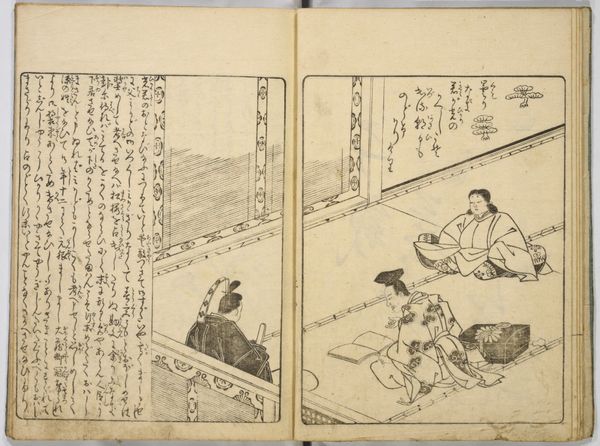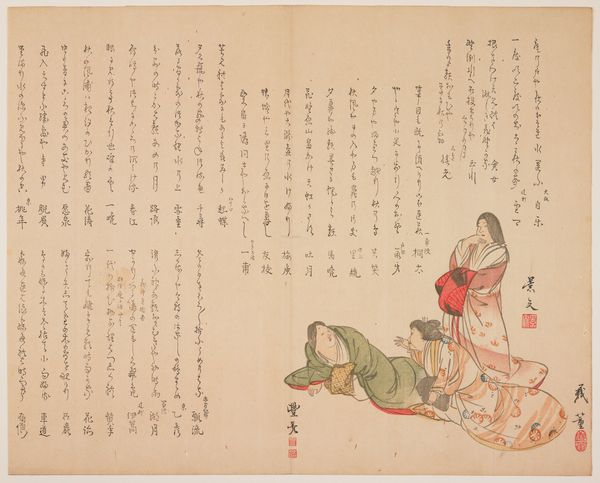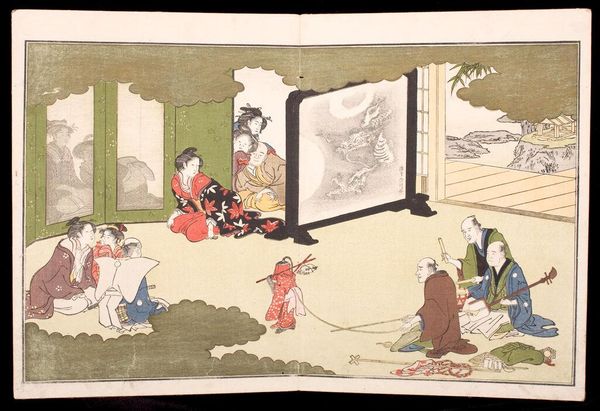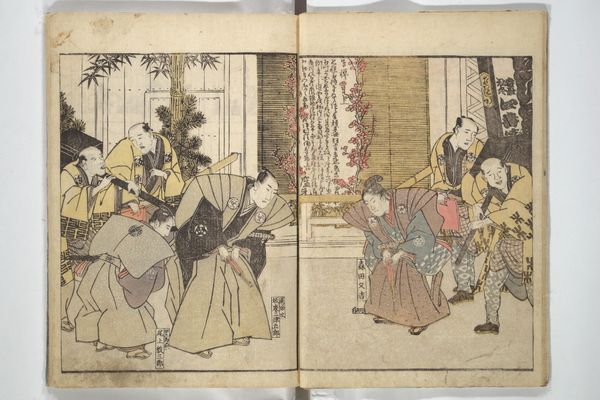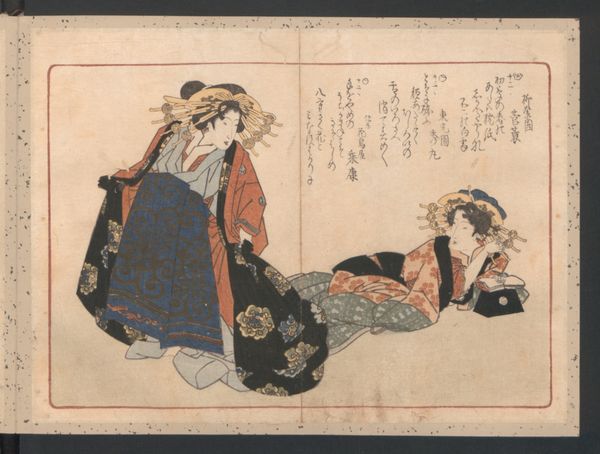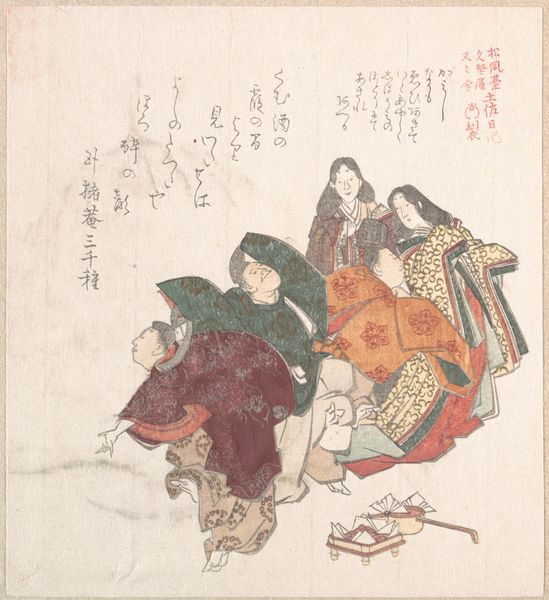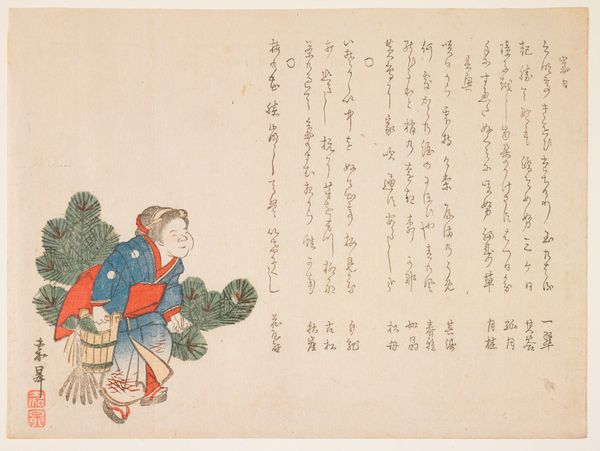
painting, print, watercolor
#
portrait
#
painting
# print
#
book
#
asian-art
#
bird
#
figuration
#
watercolor
#
coloured pencil
Dimensions: 10 1/16 × 6 11/16 in. (25.5 × 17 cm)
Copyright: Public Domain
Editor: We're looking at Tsukioka Settei's "Album of Calligraphy and Painting," created around 1830. It's currently housed at the Metropolitan Museum of Art. It seems to depict children interacting with a bird – there’s such a playful innocence to the scene. What do you see in this piece, beyond the surface level? Curator: It’s a deceptively simple image. On one level, it reflects the Edo period's increasing focus on childhood and domesticity, particularly within the merchant class. However, the imagery is also encoded with potent symbolism. Think about the role of children in society, not just as subjects for paintings. What does it mean to capture this ephemeral moment? How did it impact the development and expression of societal norms, power, and class structures? Editor: You’re suggesting it's less a sweet snapshot and more a statement about the family unit and social values of the time? Curator: Precisely. The children are well-dressed, perhaps indicating a certain level of affluence. The bird, often a symbol of freedom and nature, is contained within a cage. This creates a visual tension and also presents the dynamics of controlling wildlife as an aesthetic element. In doing so, who gains and who is exploited in this interaction? Can you think about power dynamics from the perspective of childhood experience? Editor: That's a perspective I hadn’t considered. The confined bird makes me a little uneasy now. Curator: And rightly so. By looking at art, like this image of children and a bird, through different lenses, whether feminist theory or cultural studies, we start to ask tougher questions about our society's past... and its present. It asks us to engage with art history, challenging our perspective and sparking much-needed dialogue. Editor: This piece is much richer than I initially thought. It seems crucial to not only understand the artist’s style but also the cultural context that shaped its making. Curator: Exactly. And hopefully, these questions lead us to be more mindful of our social responsibilities as historians.
Comments
No comments
Be the first to comment and join the conversation on the ultimate creative platform.
